Air Purifier Plants for Your Home
Air purifier plants are one of the best ways to keep your indoor air clean. These are some of the best air purifying plants to grow that will clean the air and also look great with your décor!
We all know that clean food and pure water are keys to good health. But the air that we breathe is also very important.
You can purify the air in your home with an air purifier, but plants are also useful for removing toxins and pollutants from the air.
And, they have an added bonus of making your home look more homey!
Air Purifier Plants
In recent years, many of us have worked hard at cleaning up our diets, getting more exercise, and other common-sense methods of gaining (or regaining) our health.
But now we’re starting to see health experts talk a lot about how indoor air quality is something that can really affect our health.
Indoor air pollutants like formaldehyde, and volatile organic compounds (VOCs) from things like paint, aerosols, furniture and carpet, are very common and can seriously damage our health in several ways.
According to one authority on pollution, “Exposure to VOCs themselves can cause a variety of health effects, including irritation to the eyes, nose, and throat; headaches and the loss of coordination; nausea; and damage to the liver, kidneys, or central nervous system. Some VOCs are suspected or proven carcinogens.” Those sound like some potentially severe health consequences that I’d prefer to avoid!
One of the best ways to reduce indoor air pollution is using less toxic paints, floor coverings and furniture (mattresses are one of the biggest indoor air polluters).
Affiliate links included below, which means I may make a small commission at no extra cost to you. Read my disclosure here.
Using a high-quality air conditioning filter (the higher the MERV value, the better) can also help to remove many nasty substances from your air. This can really help to cut down on airborne allergens like dust mites, mold spores, and pollen.
Best Air Purifier Plants
But one of the simplest ways to help improve your indoor air is by using air purifier plants.
It’s true that plants aren’t as effective at removing large amounts of air pollutants as a good-quality air purifier (this is the one we use in our home), but several plants are known to clean air.
For best results, use several different types of plants in the same area, and place more plants in bigger spaces. Although different plants may remove the same toxins, they do so with different degrees of effectiveness.
Here are ten of the very best indoor plants to help clean the air in your home.
1. Gerbera Daisies
One of the prettiest indoor plants that can help clean your air is the Gerbera daisy. This flowering plant is so bright and cheerful.
Gerbera daisies are related to sunflowers and marigolds. While they are native to South Africa, they are also popular in the U.S. They are often used in outdoor gardens but can also be grown indoors in pots.
This plant is known to be able to filter out air pollutants like benzene and trichloroethylene, and to produce clean oxygen. It prefers moist soil with direct sunlight during the sunny seasons of the year and indirect sunlight during the wintertime.
If you’d like to try growing your own daisies, you can get the seeds here. I think these would look beautiful in a flower pot like this!
Gerbera daisies are non-toxic to people and pets.
2. Spider Plant
Though it doesn’t exactly look like a spider, the spider plant does produce little plantlets on stems that may look a little spider-like.
Like the Gerbera daisy, the spider plant is native to South Africa. It is also one of the easiest air purifying plants to grow in your home. You can even replant the “spiderette” offsets to grow into new plants for your house or to share with a friend!
Spider plants help remove xylene and carbon monoxide from your air. They do best in bright, indirect sunlight and are non-toxic to people and pets.
3. Bamboo Palms
Native to Central America and Mexico, bamboo palms are a good choice for indoor plants if you have medium to low light conditions.
They prefer moist soil and will also add some humidity into your home. These plants can reach 12 feet in height but are not fast-growing.
Bamboo palms are good at removing formaldehyde, benzene and other pollutants from your air.
4. Aloe Vera
Many people are familiar with aloe vera’s amazing properties. This is our go-to plant for applying to sunburned skin. It really works!
RELATED: DIY After-Sun Spray with Aloe Vera
But the aloe vera plant is also a potent air purifier, removing benzene and formaldehyde.
As a succulent, aloe vera does best in sunny locations. Don’t overwater it, though!
While aloe vera is consumed by humans for its health benefits, it’s considered mildly to moderately toxic to pets.
You can even get your own aloe vera plant here!
5. Boston Fern
Boston ferns have feather-like leaves that are pleasing to look at but also are good for cleaning indoor air!
Although the name sounds like they might come from somewhere in New England, they are actually a tropical plant, native to South America and Mexico.
This plant can help to filter out xylene and formaldehyde. It prefers a higher humidity environment, indirect sunlight, and being kept moist. On a monthly basis it is a good idea to water your fern thoroughly.
Boston ferns are non-toxic to people and pets.
6. Areca Palm
Native to Madagascar, the Areca Palm is an attractive indoor plant. It is one of the best choices for removing toxins from the air including xylene, toluene, formaldehyde, and others.
Areca palms prefer to be kept moist with bright indirect sunlight.
This plant is non-toxic to people and pets.
7. Broadleaf Lady Palm
Originating in Taiwan and Chinca, the Broadleaf Lady Palm is another great option for air purifier plants.
This plant can help remove toxins such as formaldehyde and xylene. It is also helpful in pulling ammonia out of the air.
The broadleaf lady palm is a hardier plant that prefers to be kept moist. They are tolerant of both bright and low light environments.
This plant is non-toxic to people and animals.
8. Snake Plant
The snake plant is one of the better oxygen-producing plants that also removes toxins like benzene, trichloroethylene, and toluene.
Native to tropical west Africa, this hardy plant does best when not over watered. It can handle both low-light and brighter light conditions.
Although the snake plant is considered non-toxic to people, it can be toxic to pets.
9. Pothos
Pothos is considered a low maintenance plant with good air purification properties.
It is native to many areas including Australia and Southeast Asia. You’ll enjoy the waxy, heart-shaped leaves on this plant.
Pothos can help remove toxins such as formaldehyde, xylene, and benzene.
This plant is fairly hardy and does best with moderate watering and indirect sunlight.
It is toxic to people and pets.
When my husband and I married, he had a Pothos plant in his apartment that his mother had given him. It became part of our family, and it’s still with us, 25 years later!
These are very hardy plants that are very easy to maintain. I water mine just once a week with about a cup of water.
10. Chrysanthemum
I’ve saved one of my favorite fall plants for last: the beautiful chrysanthemum (also simply known as “mums”)!
Like Gerbera daisies, mums are often planted outdoors but can also be grown indoors. They are one of the very best plants at removing pollutants like ammonia, formaldehyde and benzene from the air.
Mums have such pretty flowers and come in an amazing variety of colors. (They can also be grown from seeds). Mums do best in a cooler spot with bright daytime light but nighttime darkness to encourage blossoms. They need good air circulation and regular watering.
Once your indoor mum stops blooming, plant it outdoors as it may resprout in the spring with blooms in the fall.
Mums are toxic to people and pets.
Find More Clean Home Blog Posts Here:
- 15 Surprising Uses for Baking Soda
- 15 Cleaning Hacks to Make Your Life Easier
- How to Deep Clean Your House
How Many Air Purifier Plants Do I Need?
When it comes to indoor plants, many people think more is better! Regarding how many air purifying plants are needed in order to clean the air, one researcher suggested at least two plants for every 100 square feet.
Are Air Purifier Plants Better Than Air Purifiers?
From the research I’ve seen, air purifiers do a much better job of cleaning the air than houseplants. However, many researchers still believe plants are beneficial to the home environment.
In addition to the potential for cleaning the air, houseplants may also relieve stress and promote a sense of wellbeing. Plus, they just look great!
We currently have about five houseplants spread throughout the house, and I’m often tempted to get more! My favorite thing is to make new plants by taking cuttings off of existing plants.
I have a baby Pothos that started off as a cutting from the parent plant. I put the cutting in a jar of water on a windowsill, and it created roots. After the roots looked sufficient, I planted the baby plant in a ceramic pot filled with potting soil. It’s been a couple of months, and it looks happy and healthy!
I’m planning to make more Pothos plants this way, which is so fun because it’s free!

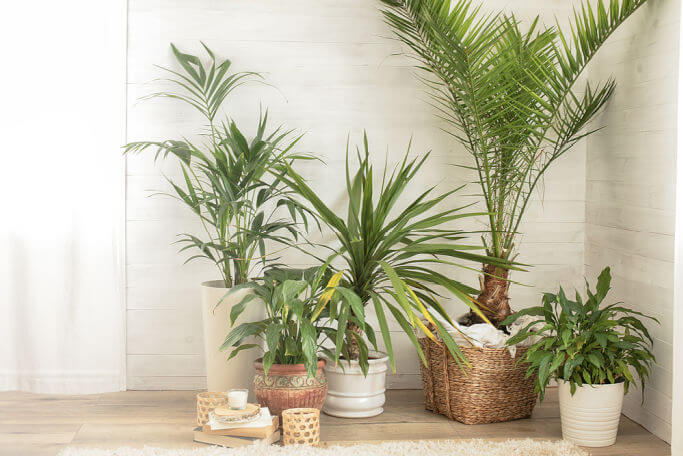
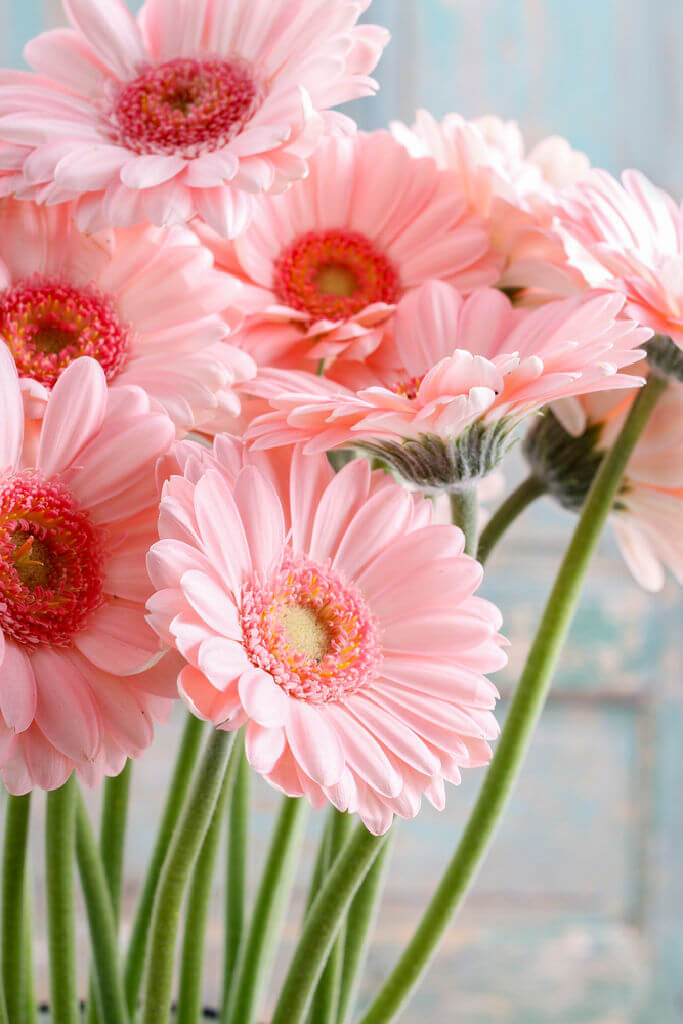
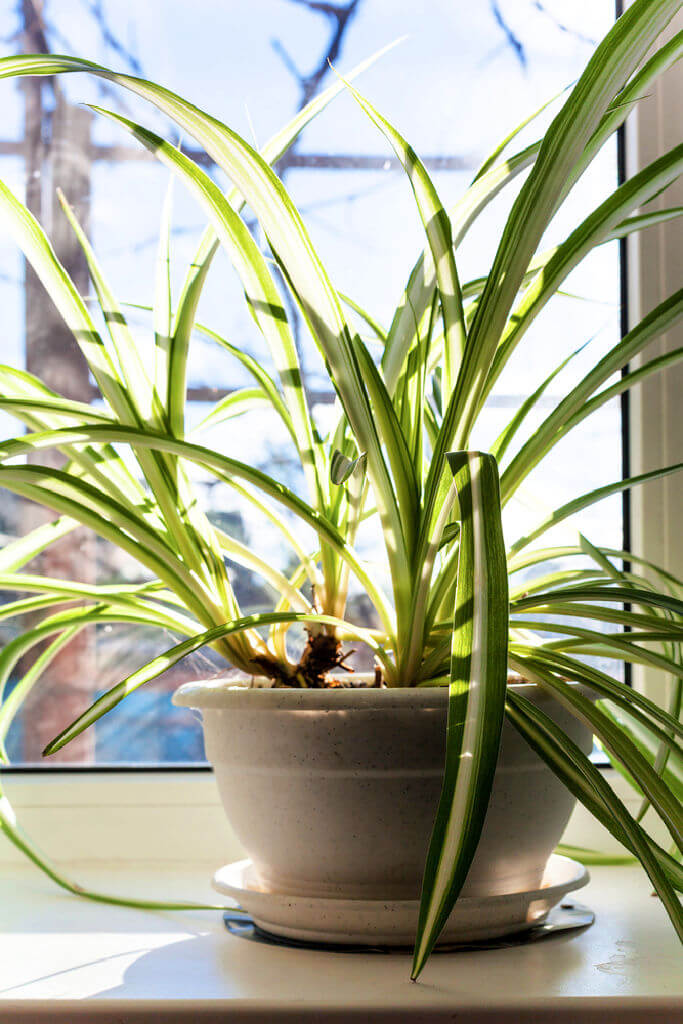
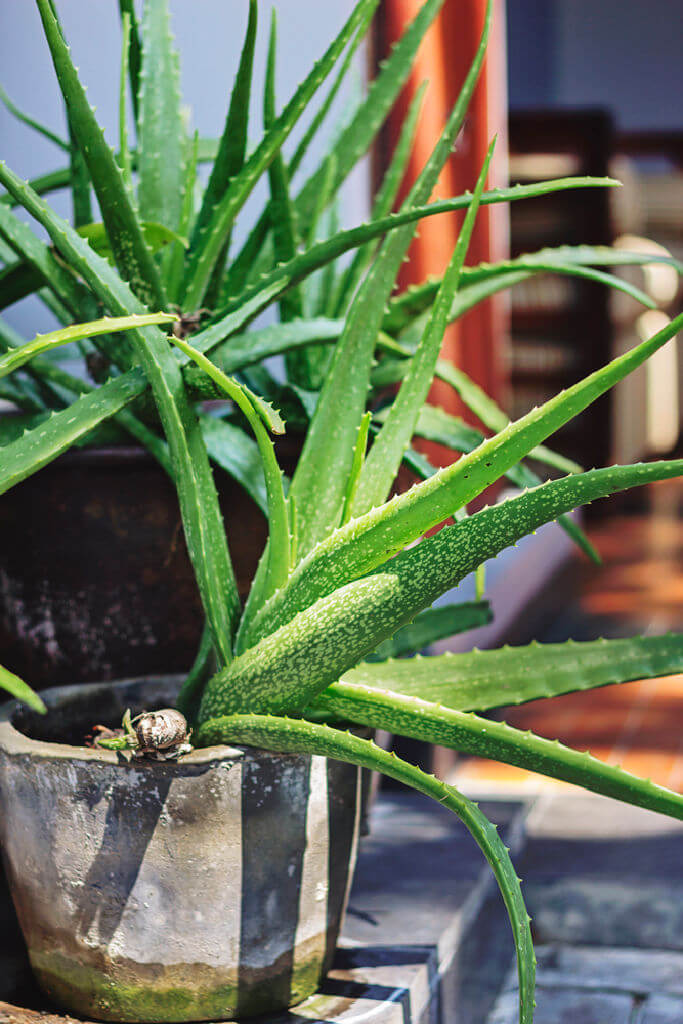
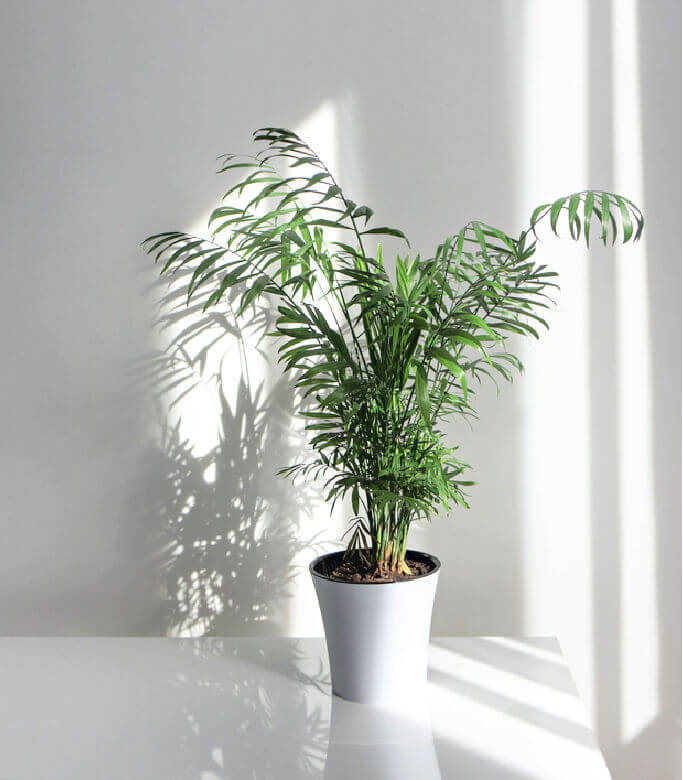
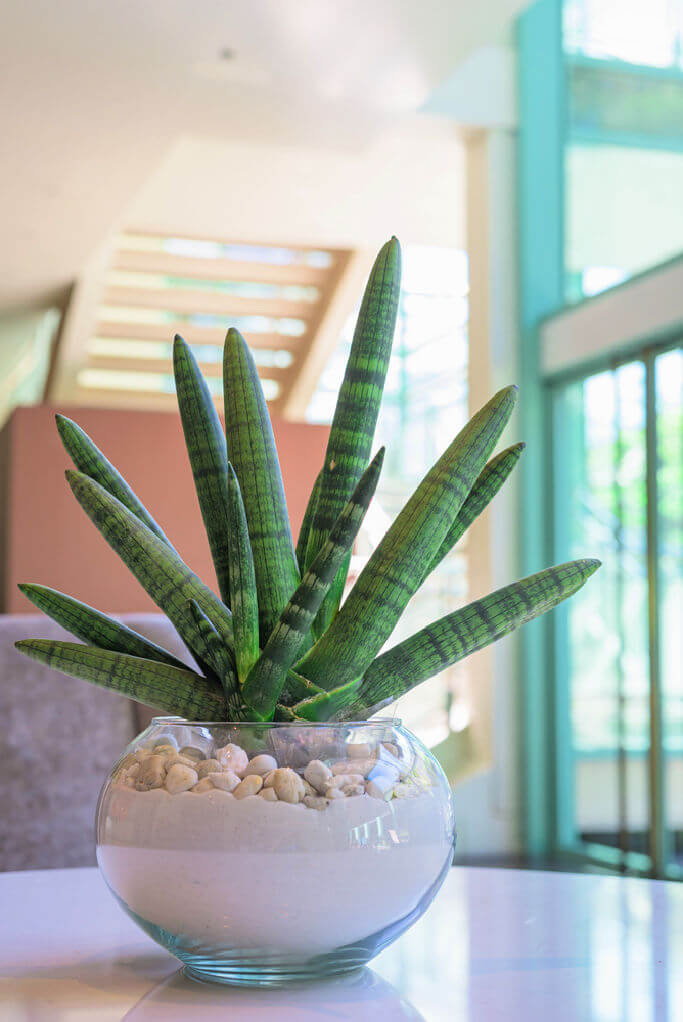
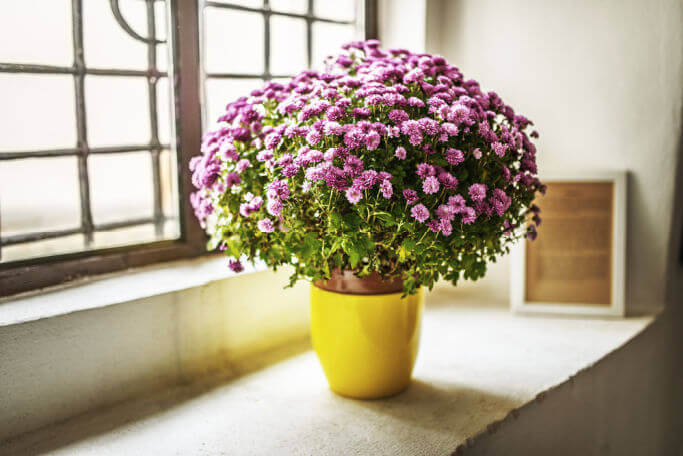
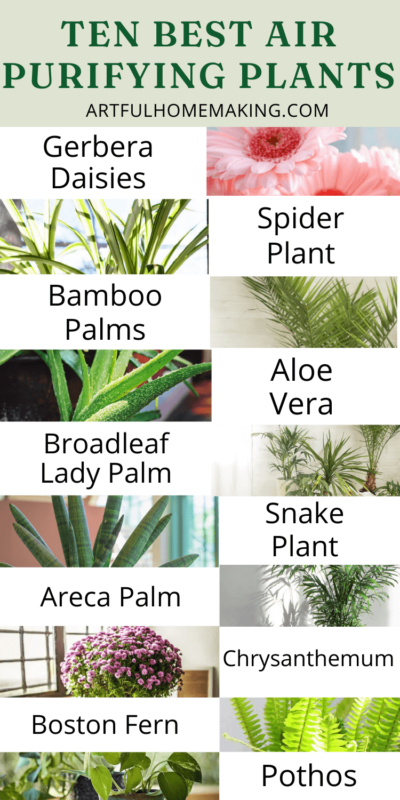
I don’t know all of these plants, but I do enjoy house plants. I look forward to when we have our house and can add some plants!
Thank you for sharing this at the Homestead Blog Hop!
Laurie
Thanks for stopping by, Laurie!